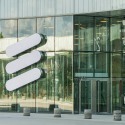Ericsson still seeks networking edge
Even without Edge Gravity, Ericsson is still pursuing an edge strategy focused on software and integration under a DIY model that extends a technical bridge between service provider networks and hyperscalers.

Ericsson has pulled the plug on Edge Gravity, but the company insists that its overall edge computing strategy is alive and well. It's just taking a different path.
Rather than leaning on an infrastructure-focused service model with network partners that was key to Edge Gravity's approach, the path forward for Ericsson is centered on a do-it-yourself (DIY) model. This new approach is underpinned by a software and orchestration strategy that aims to help service provider networks hook up with hyperscalers such as Google, Amazon and Microsoft.
A core focus is to help service provider partners develop and manage a hybrid cloud environment that stitches together private and public clouds and uses a combined fabric targeting a wide set of enterprise applications, including those centered on 5G. Ericsson, meanwhile, sees itself playing the role of an orchestrator that can bring those sides together while supporting its own apps and services alongside those from outside developers.
"What we need to have is a hybrid cloud solution," Lars Martensson, head of cloud and NVV infrastructure at Ericsson, said. "What we foresee here is a definite opportunity for operators to have a central role in developing new use cases for the enterprises. It's going to be all around cloud infrastructure in terms of the compute platform. But, more importantly, we think it's going to be around orchestration of workloads and exposure of [service provider] network capabilities for these use cases."
Service providers have a "golden opportunity" to be primary players in this evolving market, Martensson said, holding that success will come through partnerships with hyperscalers and systems that can link everything together.
With those partnerships and orchestrated systems in hand, certain major telcos in the US and abroad are large and strong enough to win enterprise business themselves with the right kind of DIY set-up, Martensson believes.
That approach, Martensson says, can support a wide range of market models for service providers that want to win enterprise business with a private cloud/standalone infrastructure, or one in which they team up with a hyperscaler and share in the spoils. By contrast, Edge Gravity's approach was more fixated on operators that didn't necessarily want to enter the enterprise market themselves, but still wanted access to a global edge platform on which to run content.
"We will still have that kind of solution, but just not as a service," Martensson said. Under the DIY model pitched by Ericsson, the operator will have a solution that it can use to target enterprise customers more directly.
For example, a company like Verizon might pursue deals in certain verticals such as oil and gas or healthcare and complement access on their networks with Amazon or Microsoft clouds. Ericsson, meanwhile, would facilitate how the telco exposes its network assets and integrates with those hyperscaler partners.
Martensson believes the door remains open in the edge market even as hyperscalers continue to extend public clouds to private data centers. "If you look at the market today for established use cases that really require edge, it's not really there yet," he said.
Ericsson is in the proof-of-concept stage in these areas, but does have a handful of engagements with customers underway along with some initial trials, according to Martensson
Related posts:
— Jeff Baumgartner, Senior Editor, Light Reading
About the Author(s)
You May Also Like




_International_Software_Products.jpeg?width=300&auto=webp&quality=80&disable=upscale)







